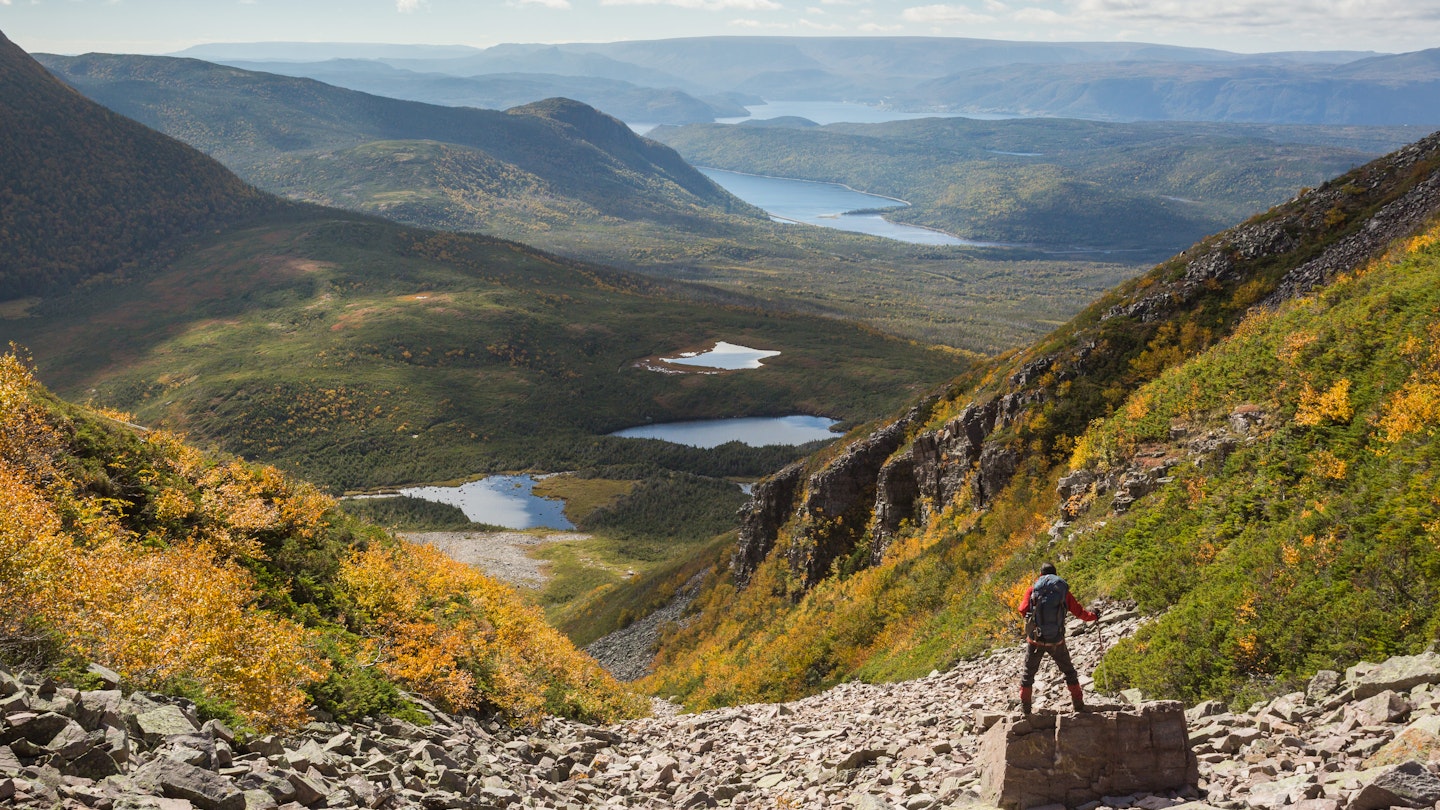Discover Newfoundland: A Journey with GoTravelDaily

When a northern, sea-bound island is referred to as “The Rock,” one can anticipate its elemental beauty. Newfoundland is a place where the Earth’s mantle is a significant attraction. Stiff breezes often turn into roaring winds off the cold Atlantic, pushing around icebergs and rocking fishing boats in protected coves. Here, clouds of seabirds nest amidst the rocky cliffs.
The characteristics that define Newfoundlanders – hardiness, hospitality, and humor – have evolved from generations of forging a livelihood from this rugged landscape. During 9/11, the resourcefulness and generosity of Newfoundlanders were exemplified when 38 planes made emergency landings in Gander, leading to the creation of the Broadway musical Come From Away. You will undoubtedly experience this welcoming spirit throughout the majestic isle.
When Should I Go to Newfoundland?
The ideal time to visit Newfoundland is from May to October. Icebergs drift by the coast in spring, while autumn offers crisp, wide-open spaces. The prime travel months are July and August, with mild temperatures that perfectly suit the complete operation of historic sites, pubs, restaurants, and accommodations.
However, traveling during this peak season can increase costs for hotel stays. Unless you’ve brought your own vehicle on one of the two ferries from Nova Scotia, you will need to rent a car. Alternatively, for a quick getaway, flying into St. John’s, the walkable capital, is an option.
While winters are harsh, excellent for skiing in the western slopes, they render many activities impractical.

How Much Time Should I Spend in Newfoundland?
To experience St. John’s fully, three days of dining, socializing, and exploring are recommended. Additionally, allocate four days for hiking, driving, and boat tours around the Gros Morne National Park region. To explore the entirety of the island, plan for at least a week.
Newfoundland’s size might surprise you; it’s approximately the same size as Cuba and ranks as the fourth-largest island in Canada. The 680 km (423 miles) route from Corner Brook to St. John’s takes at least seven hours, similar to the journey from the ferry terminal at Port aux Basques to St. Anthony on the northern peninsula.
Is It Easy to Get Around Newfoundland?
Consider your trip preferences when planning your visit to Newfoundland, a vast and diverse island. Whether you enjoy day hikes in ancient mountain landscapes or long drives featuring endless scenic views, you can land at Port aux Basques or fly into Deer Lake to rent a car.
If ocean views along rocky coastlines with abundant wildlife intrigue you, consider taking the 16-hour ferry crossing from Nova Scotia to Argentia or fly into St. John’s and rent a car.
Regardless of your route, securing a rental car in peak season can be challenging, so advance booking is crucial.

Top Things to Do in Newfoundland
The stunning balance of nature and culture motivates many to revisit the western fjords and serene towns surrounding Gros Morne National Park. Spend a full day hiking Gros Morne Mountain to enjoy unparalleled views of the waterways below. Furthermore, embark on a walk through the Tablelands, admiring the exposed Earth’s mantle.
Late May to early June is prime iceberg season, with massive ice formations drifting along the coast. The Newfoundland and Labrador Iceberg Report on social media provides current sighting locations. One of the highlights in St. John’s is hiking up Signal Hill, where Cabot Tower oversees the harbor, offering chances to spot icebergs or even whales.
For a remarkable wildlife experience, venture south from St. John’s to the Cape St. Mary’s Ecological Reserve, home to an astounding variety of seabirds. The Witless Bay Ecological Reserve, just 45 minutes from the capital, hosts an impressive colony of puffins, along with Leach’s storm petrels, making boat tours here a must-visit.
For nightlife enthusiasts, George Street in downtown St. John’s promises an unforgettable experience with its numerous bars and lively music scene. It’s renowned for having more bars per square foot than any other street in North America.
What Are the Costs Involved in a Trip to Newfoundland?
As a more isolated Canadian destination, reaching Newfoundland can be pricier than other places. If you opt for a ferry, expect to pay over $400 for a couple’s return trip to Port aux Basques and about $700 for the Argentia route plus additional costs for sleeping cabins.
While in Newfoundland, hotel, restaurant, and bar prices align with other regions in Canada. For budget travelers, camping or staying at bed and breakfasts where you can connect with locals is a great way to save.
FAQs About Newfoundland
What Should I Wear?
Pack layered clothing and a waterproof jacket to cater to Newfoundland’s unpredictable weather, along with sturdy hiking shoes to explore its extensive trails.
Do I Need a Visa?
Most visitors do not require a visa; however, it’s advisable to verify entry regulations with the Canadian government.
What About Newfoundland’s Time Zone?
Newfoundland follows its own time zone, Newfoundland Standard Time (NST), which is 30 minutes ahead of Atlantic Standard Time.
Is Driving Safe?
Driving conditions are generally safe in Newfoundland; however, beware of moose crossing roads at night.
How to Prepare for a Wilderness Hike?
Dress for the weather, inform someone of your whereabouts, and ensure you have enough water and snacks for your hike.
Is Tipping Standard?
In standard restaurants or taxis, a tip of 15% is customary, but it can vary according to service quality.
Was Newfoundland Inhabited Before European Arrival?
Indeed, Newfoundland has a rich human legacy dating back to the Vikings. Historical interest includes archaic peoples such as the Dorset Palaeo-Eskimos, the extinct Beothuk, and the Mi’kmaq, who maintain a presence today.





